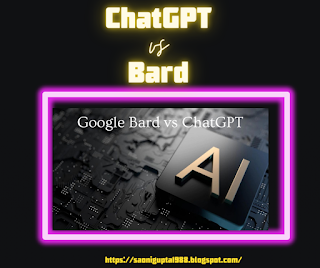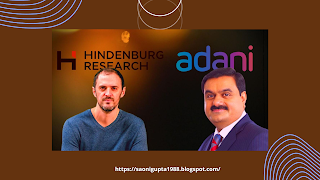The Lingual Landscape: Exploring Social Media Language
Introduction
In the era of the internet and social media, our means of communication have evolved dramatically. Language, being a fundamental aspect of human interaction, has adapted and transformed in response to the digital landscape. In this blog, I will explore the intricate relationship between language and social media, delving into the impact of social media platforms on our language patterns, the emergence of new linguistic phenomena, along with the challenges and opportunities they present.
The Influence of Social Media on Language
Social media platforms have revolutionized the way we communicate, providing us with new avenues to express ourselves. The following topics will be examined in this section:
a. Conciseness and Creativity: With character limits and the need to capture attention, social media encourages concise and impactful language. Abbreviations, acronyms, and emojis have become popular ways to convey meaning within a limited space. Examples include "LOL" (laugh out loud), "OMG" (oh my god), and "BTW" (by the way).
The character limitations and fast-paced nature of social media platforms have given rise to a unique style of concise and creative expression. For instance, Twitter restricts tweets to 280 characters. This constraint necessitates concise and to-the-point communication, encouraging users to distill their thoughts into compact statements.
b. Informal Language: The informality of social media has led to the emergence of casual language styles, including slang, internet memes, and viral phrases. Informal language on social media provides a platform for individuals to express themselves authentically, establish connections, and engage in online communities.
However, it's essential to be mindful of context and audience. Different social media platforms may have varying degrees of formality, and understanding the appropriate language style for each platform is crucial for effective communication.
c. Global Language: Social media has bridged geographical boundaries, connecting people from different cultures and languages. While English has become the dominant lingua franca of social media, the global nature of these platforms has also led to the development of a diverse linguistic landscape.
The concept of a global language in social media represents both opportunities and challenges. While it promotes cross-cultural communication and fosters connections between people from different parts of the world, it also raises concerns about linguistic diversity and inclusivity.
Linguistic Phenomena in Social Media
The unique characteristics of social media platforms have given rise to fascinating linguistic phenomena. This section will focus on:
a. Hashtags and Trending Topics: Hashtags serve as a unifying element across different languages and cultures on social media. Trending topics can transcend language boundaries, allowing users to participate in global conversations and movements. The use of popular hashtags allows for the aggregation of content and facilitates the discovery of related discussions, regardless of the language used.
b. Memes and Viral Language: Memes, often comprising images or videos with accompanying text, are widely shared on social media. They capture cultural references, humor, and shared experiences, becoming a form of collective language. Memes are created, adapted, and shared rapidly, contributing to the evolution of online language and creating a sense of community.
c. User-Generated Language: Social media users actively contribute to language evolution through their creation of new words, phrases, expressions, and even grammatical structures. These collectively shape the evolving language patterns on social media platforms. For example, words like "selfie," "twerking," and "photobomb" originated or gained popularity through social media usage.
Language Challenges and Opportunities
Language in social media presents both challenges and opportunities that impact communication and interactions. Let's explore some of these challenges and opportunities in more detail:
Challenges
Miscommunication and Misinterpretation: The brevity as well as informality of social media can lead to miscommunication and misinterpretation. Without the presence of non-verbal cues and tone, messages can be easily misunderstood, leading to conflicts or misunderstandings among users.
Language Barriers and Exclusion: Social media platforms predominantly operate in certain languages, often English, which can create language barriers for non-native speakers. Users who are not fluent in the dominant language may face challenges in participating fully, leading to exclusion or limited engagement.
Amplification of Hate Speech and Online Harassment: Social media platforms can amplify the spread of hate speech, online harassment, and harmful language. The relative anonymity and distant nature of online interactions can embolden individuals to engage in offensive or hurtful behavior, posing challenges for maintaining a safe and inclusive online environment.
Opportunities
Global Communication and Connection: Social media provides opportunities for global communication and connection. It enables individuals from diverse backgrounds, cultures, and languages to interact and exchange ideas, fostering cross-cultural understanding and facilitating connections that may not have been possible otherwise.
Language Learning and Cultural Exchange: Social media can be a valuable tool for language learning and cultural exchange. Users can connect with native speakers, access language learning communities, and immerse themselves in different cultures. Language learners can practice and improve their language skills by engaging with native speakers or language-focused content.
Crowdsourcing Knowledge and Information: Social media platforms allow users to crowdsource knowledge and information. Users can pose questions, seek advice, or share information on various topics, benefiting from the diverse perspectives and expertise of the online community.
Expression of Identity and Creativity: Social media offers individuals a platform to express their identity, showcase their creativity, and share their unique perspectives. Users can leverage language, visuals, and multimedia elements to create compelling content that resonates with others and fosters self-expression.
Activism and Social Change: Social media has become a powerful tool for activism and social change. Users can raise awareness, mobilize communities, and advocate for important causes by using language effectively. Hashtags, viral campaigns, and social movements have originated and gained momentum through social media platforms.
A Wrap-Up
Language and social media have co-evolved, transforming the way we communicate and connect in the digital age. The dynamic interplay between language and social media continues to shape our online interactions, influencing global communication patterns and creating both challenges as well as opportunities. By understanding this relationship, we can navigate the digital landscape more effectively and foster meaningful and inclusive conversations in the ever-evolving realm of social media.
.png)
.png)





Just d other day I was thinking abt this interplay between language n social media. Nice discussion.
ReplyDeleteThank you so much !!! 😊… Keep following my articles.
DeleteVery informative 👍
ReplyDeleteThank you so much !!! 😊
Delete